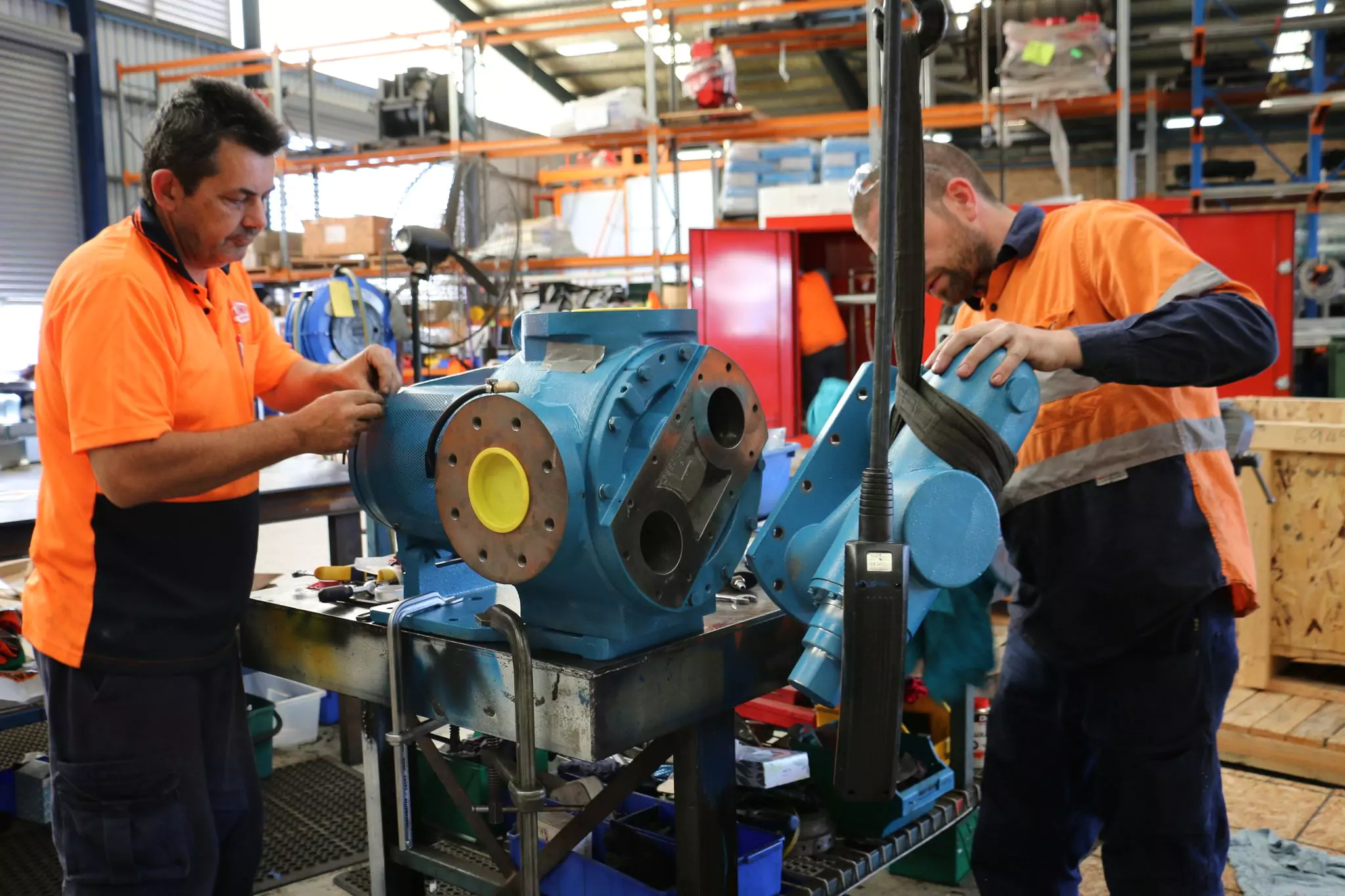
You’ll enjoy the All-Pumps experience. We’re certain.
Maintenance Capabilities
Maintenance Capabilities
Resources
Every industry today requires a pump somewhere in its operation. From food processing to oil wells, pumps play a critical role in the production and maintaining our standard of living. Pipes carry the fluid, but pumps supply the energy to move it. Because the piping and pumps work together, they must be thought of and designed as an integrated system. Change one part, and the system can become less efficient.
In this Beginner’s Guide to Pumps, we attempt to keep the Information basic and non-technical as possible. Bear in mind that pumping systems are highly technical in nature. Every length of pipe, elbow, valve, the height of the pump above or below the reservoir, fluid viscosity and inside diameters of all equipment affect the optimal discharge flow for the system.
This guide also covers the short history of pumps to see how they evolved over time. We then cover the basic parts, Types of Pumps, and the industries that use them. Lastly, we include some basic troubleshooting topics.
We hope that you find this guide useful. When it comes time to planning for a new pumping system or repairing an existing one, you can rely on the experts at All Pumps to get the job done right the first time… EVERY TIME.
Head refers to the height at which a pump can raise a fluid and can be calculated from H (metres)= pressure in kPa/ (9.8 x specific gravity).
The vertical distance between the centre line of a pump and the level to which the liquid is pumped.
The distance between the level of where the liquid enters the suction line to the height of the centre line of the pump when the pump is higher than the reservoir.
Defined as any pressure lower than atmospheric. Each pump creates a vacuum into which fluids flow under atmospheric pressure. Pumps create low pressure or suction in a variety of ways and define the type of pump. Pumps that rotate use centrifugal force to accelerate the fluid, creating low pressure in the centre of the impeller. Positive displacement pumps use plungers, pistons or diaphragms to displace water and create a vacuum using a linear reciprocating motion of a piston moving in and out of a cylinder.
Pump performance factors include:
As you can see, there are several forces acting upon a pump that directly affects its performance. Each force has a mathematical calculation that helps define the BEP for each pump. Consider pump performance curves from manufacturers as your mathematical cheat sheet to help you select and properly install the right pump for your application.
Although pumps come in all shapes, sizes and configurations, most pumps contain five basic components:
| The Casing | this is the outer shell or housing that encases the pump and can be made from different materials depending on the duty fluid and other system requirements. |
|---|---|
| Fluid Displacement Device | The two main ways of moving fluid are centrifugal and positive displacement. In centrifugal pumps, impellers are the rotating discs with fins or vanes attached. They spin rapidly to accelerate the fluid outwards to the discharge port. Meanwhile, positive displacement pumps use different types of pistons, gears, lobes or screws to pump fluids. |
| Bearings | a set of mechanical support that allows continuous rotation of the impeller, reduces the rotational friction, and supports the loads in other pump assemblies. |
| The Hub | the central part of a wheel attached to the bearing assembly. It is the source of power for impeller rotation in centrifugal pumps. |
| The Mechanical Seal | protects the bearing assembly from excess grease loss and contamination. Seals also keep fluids inside the pump from leaking while allowing the shaft to spin or reciprocate depending upon the type of pump. |

We find pumps in every area of our modern lives. They are important equipment needed in the manufacture of almost all essential goods we consume and use every day. From running water to the box of cereal on the table, they all require pumps as part of the process.
General industries that rely on pumps are:
Within each industry, there are many variations of pumps depending upon the amount and type of fluid they move. Let’s look at some types used by each industry.